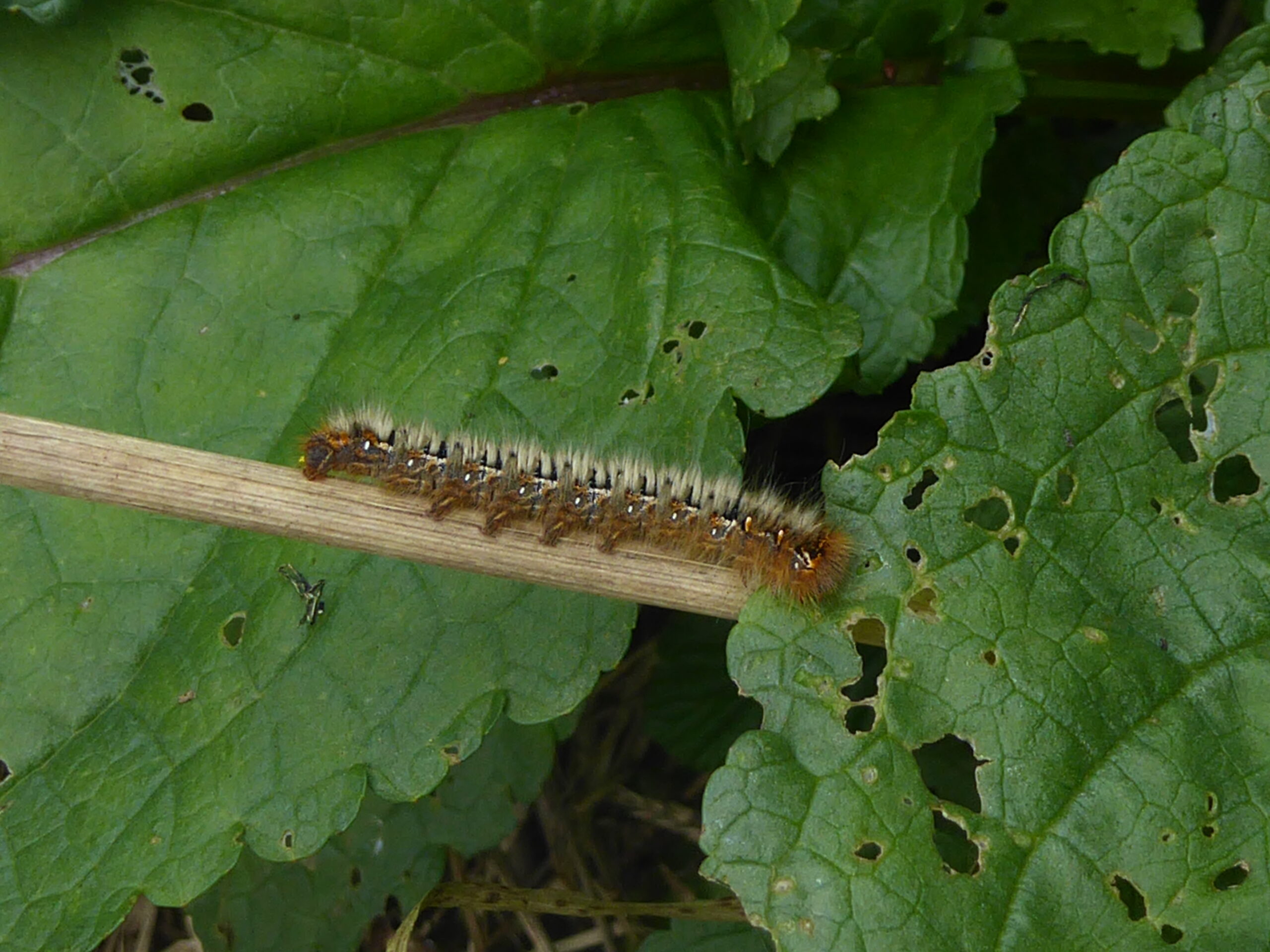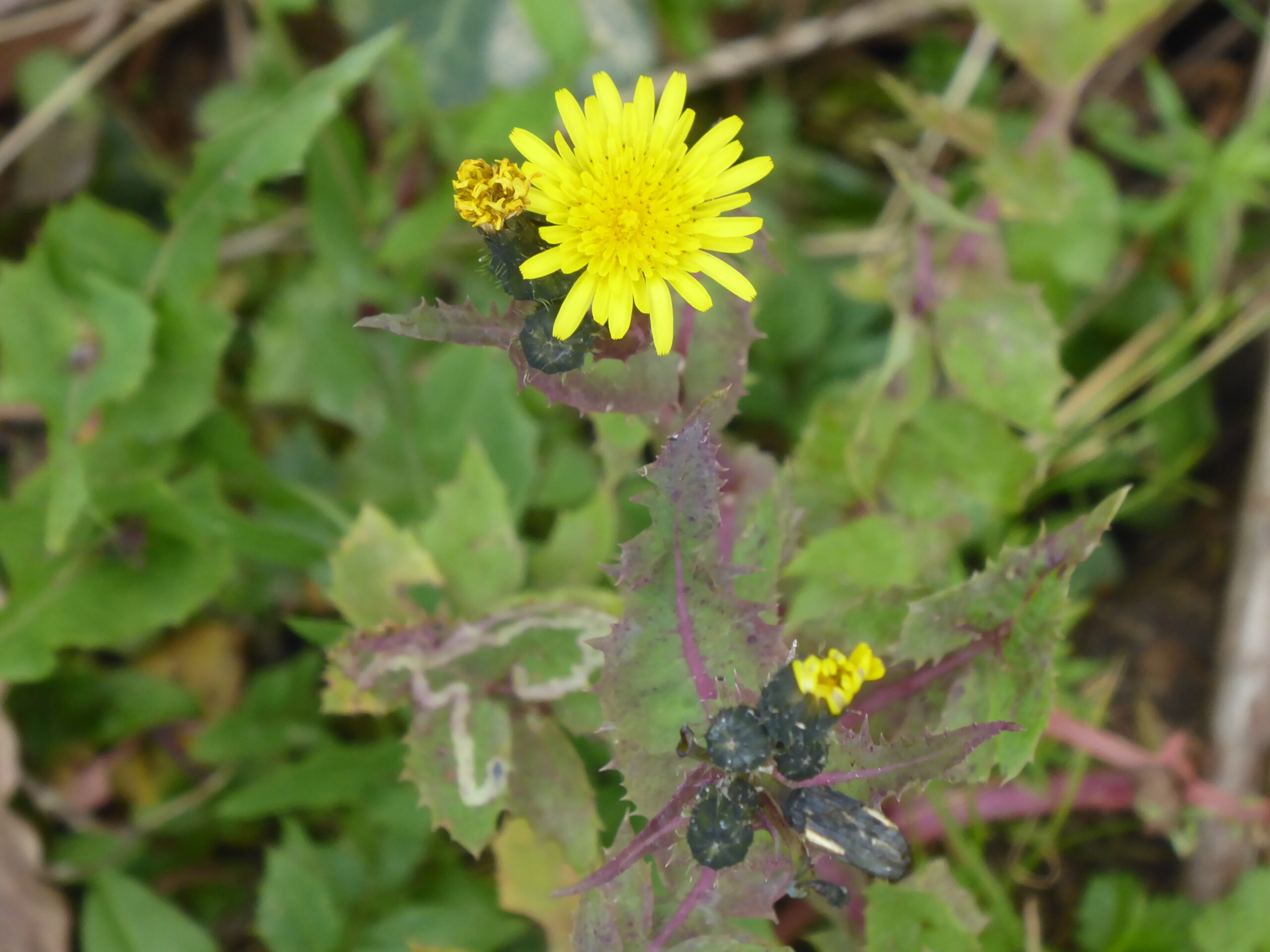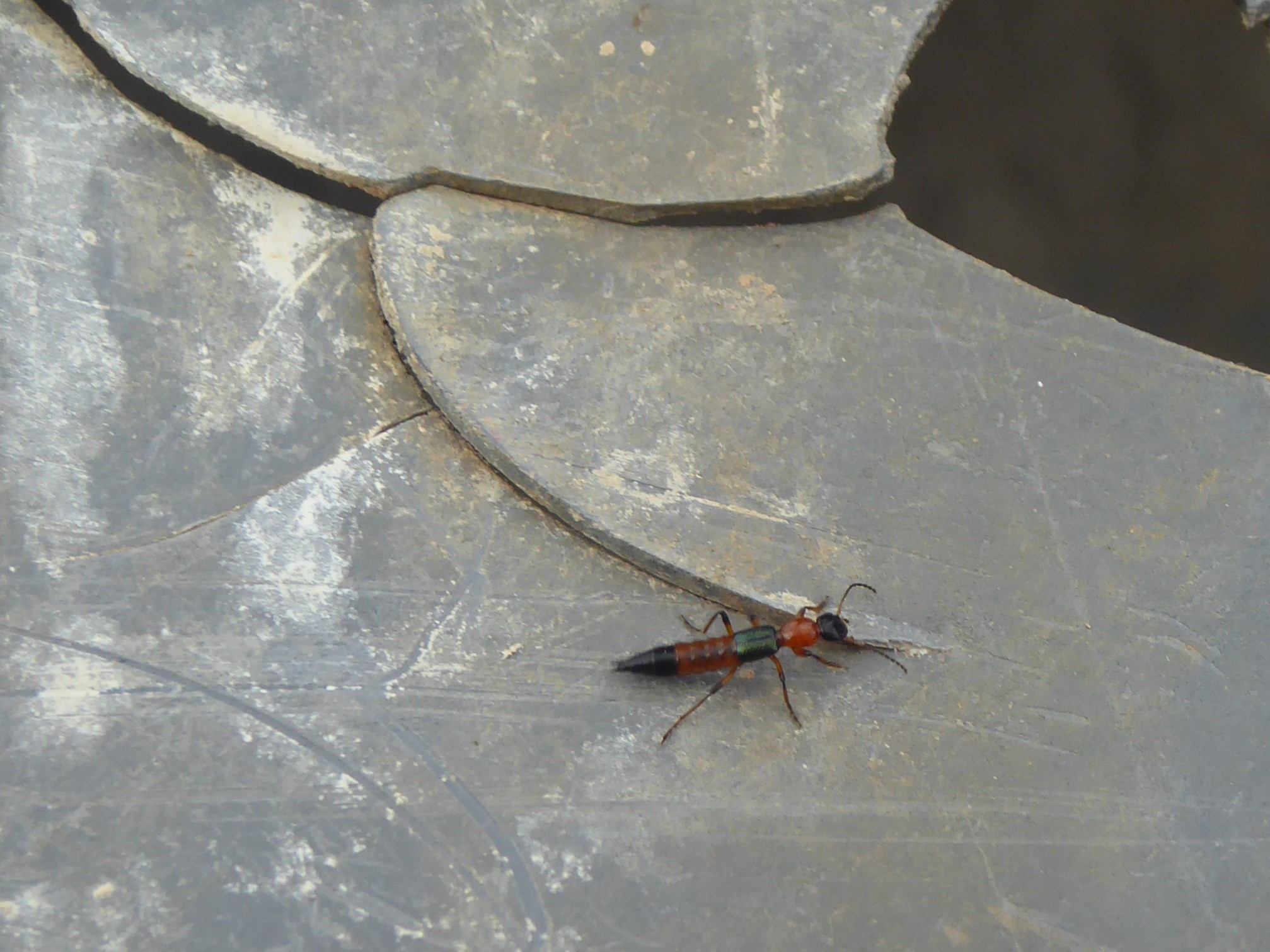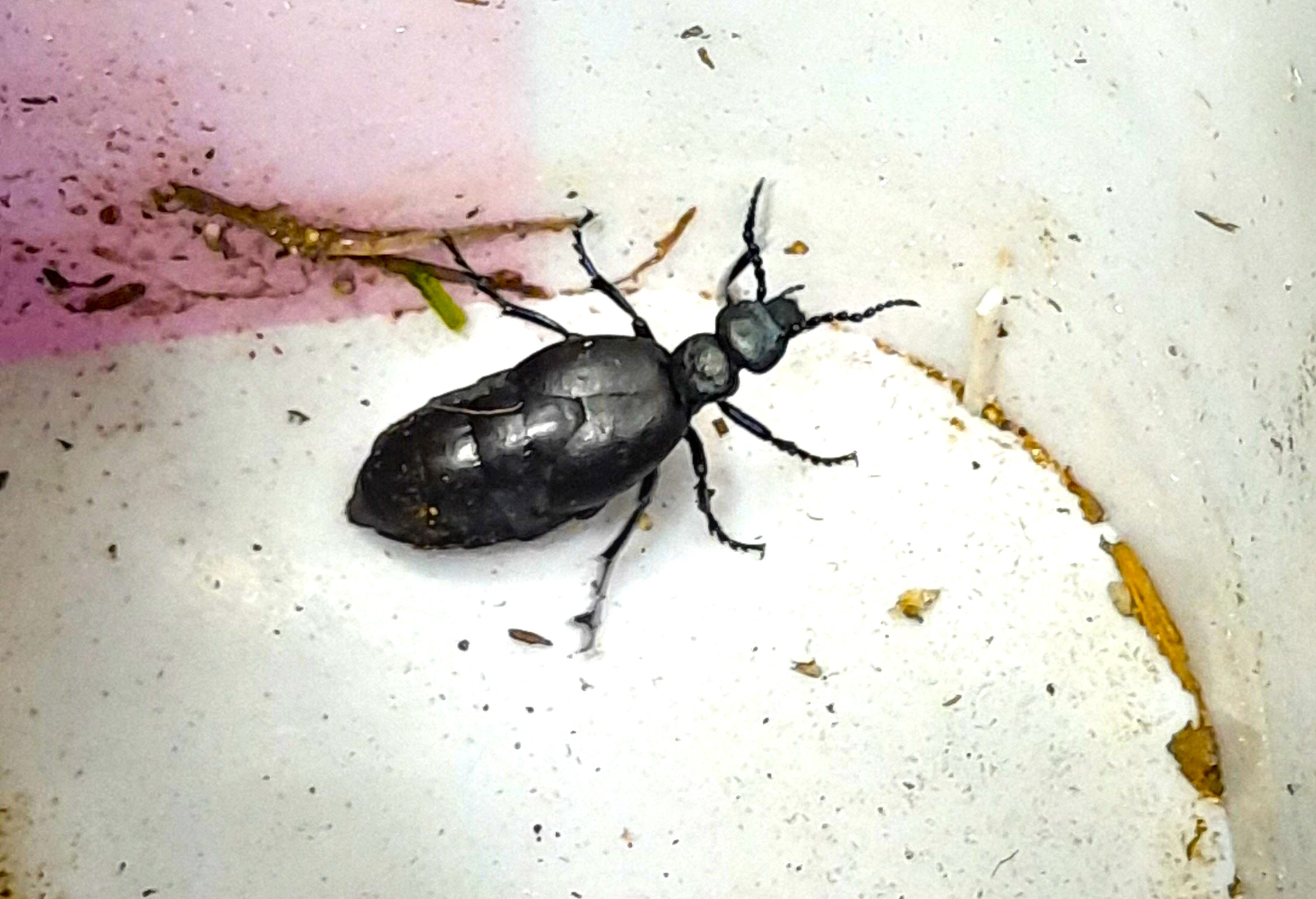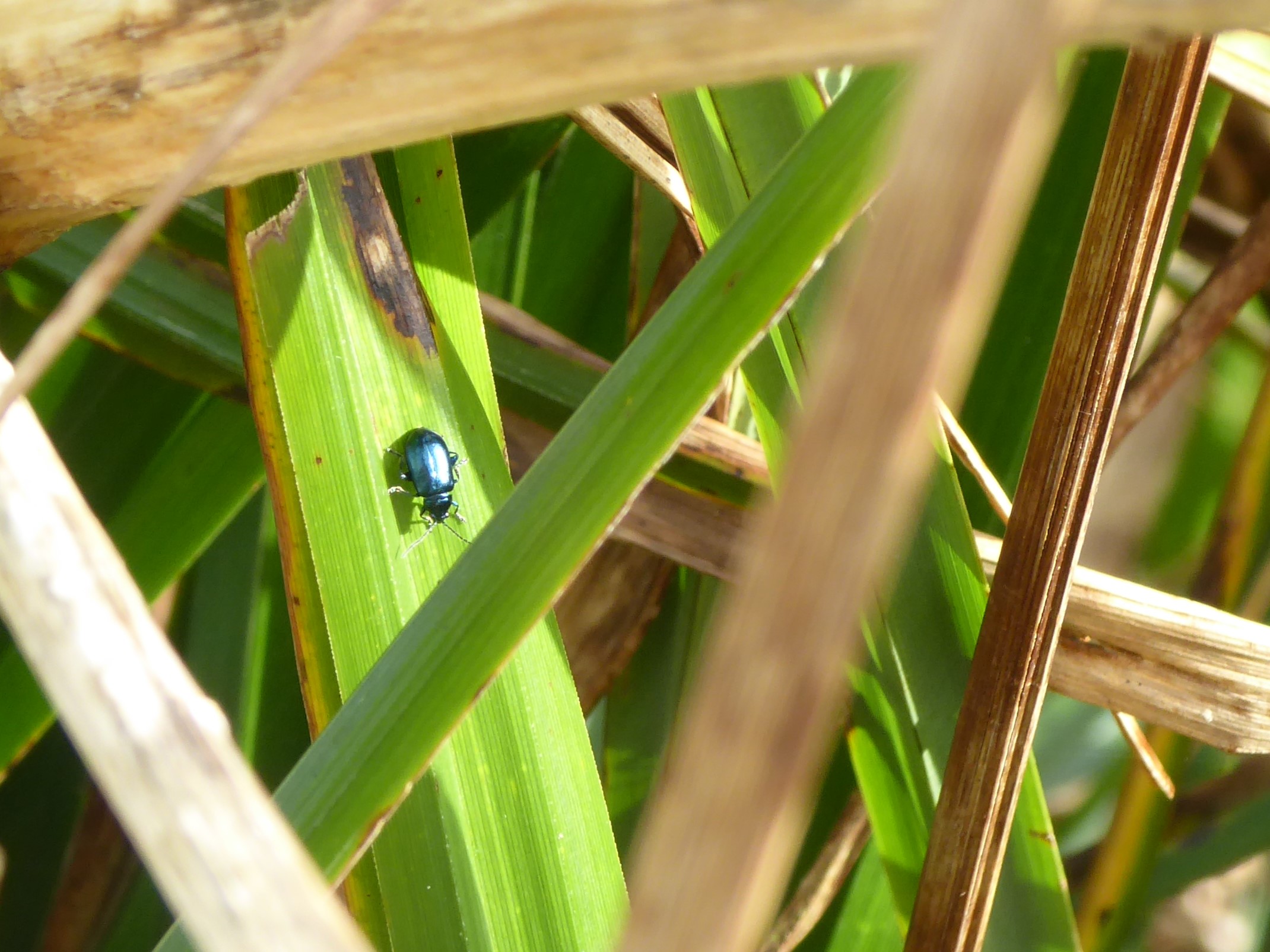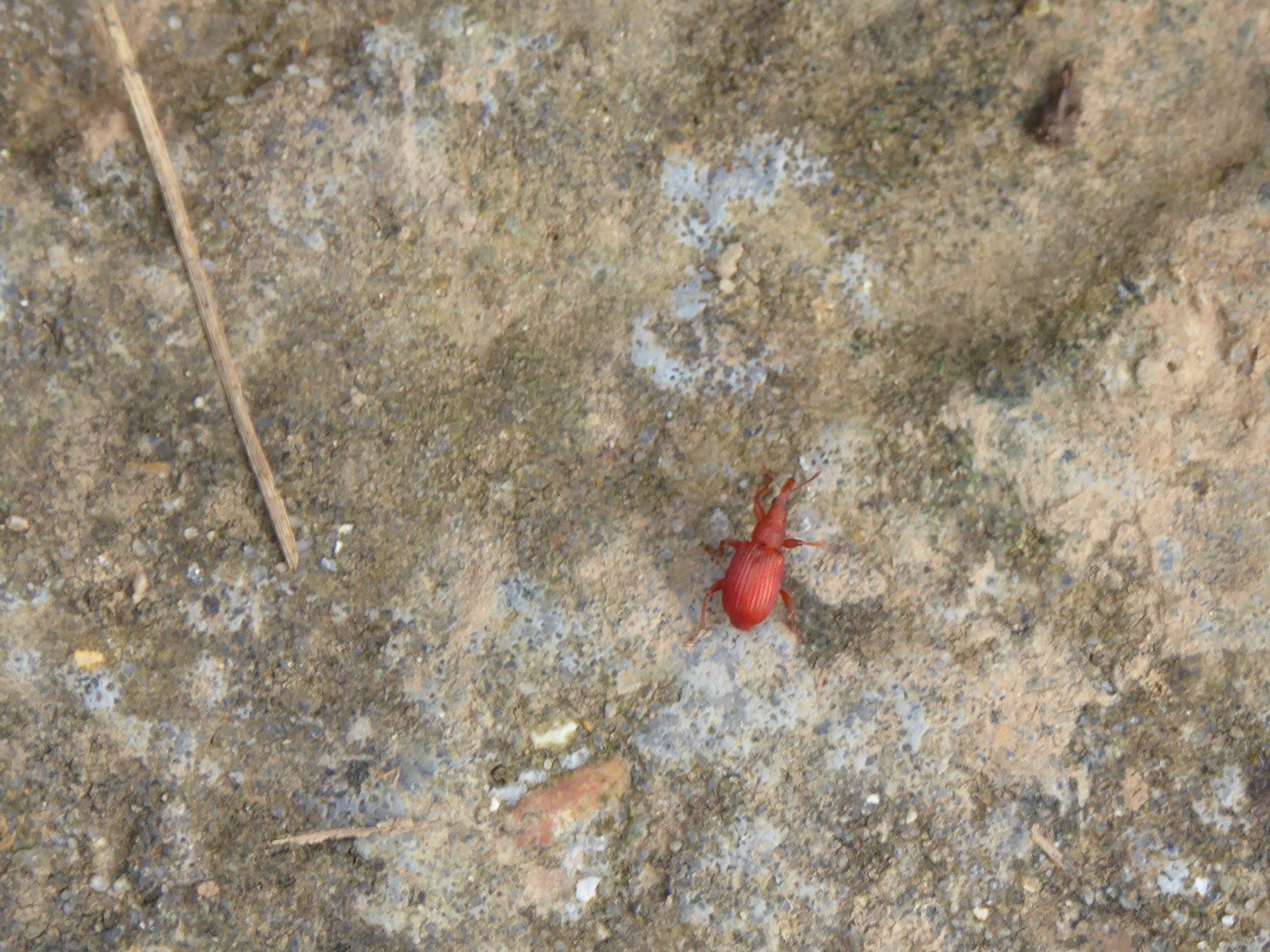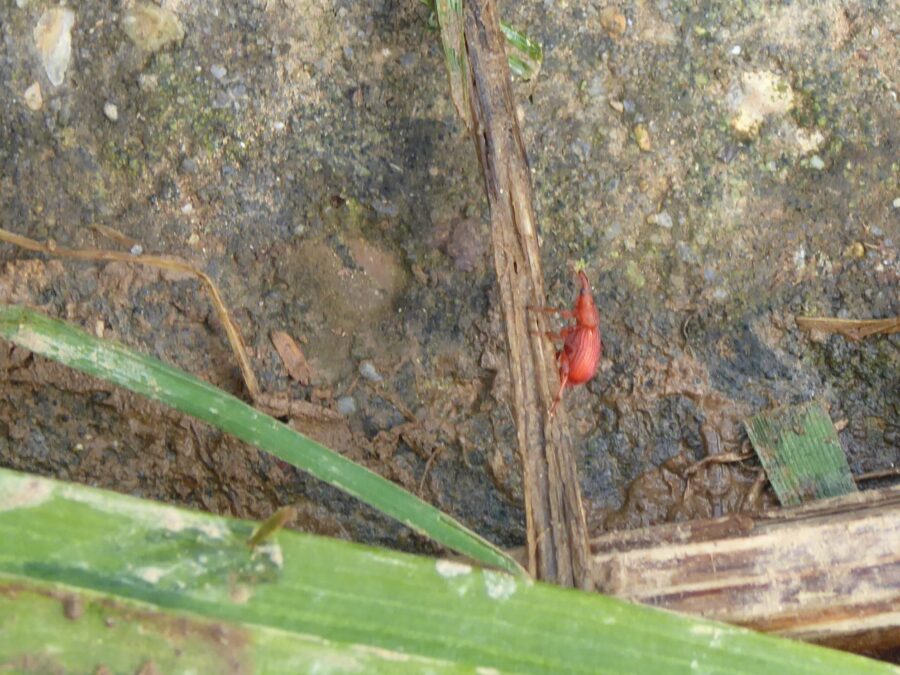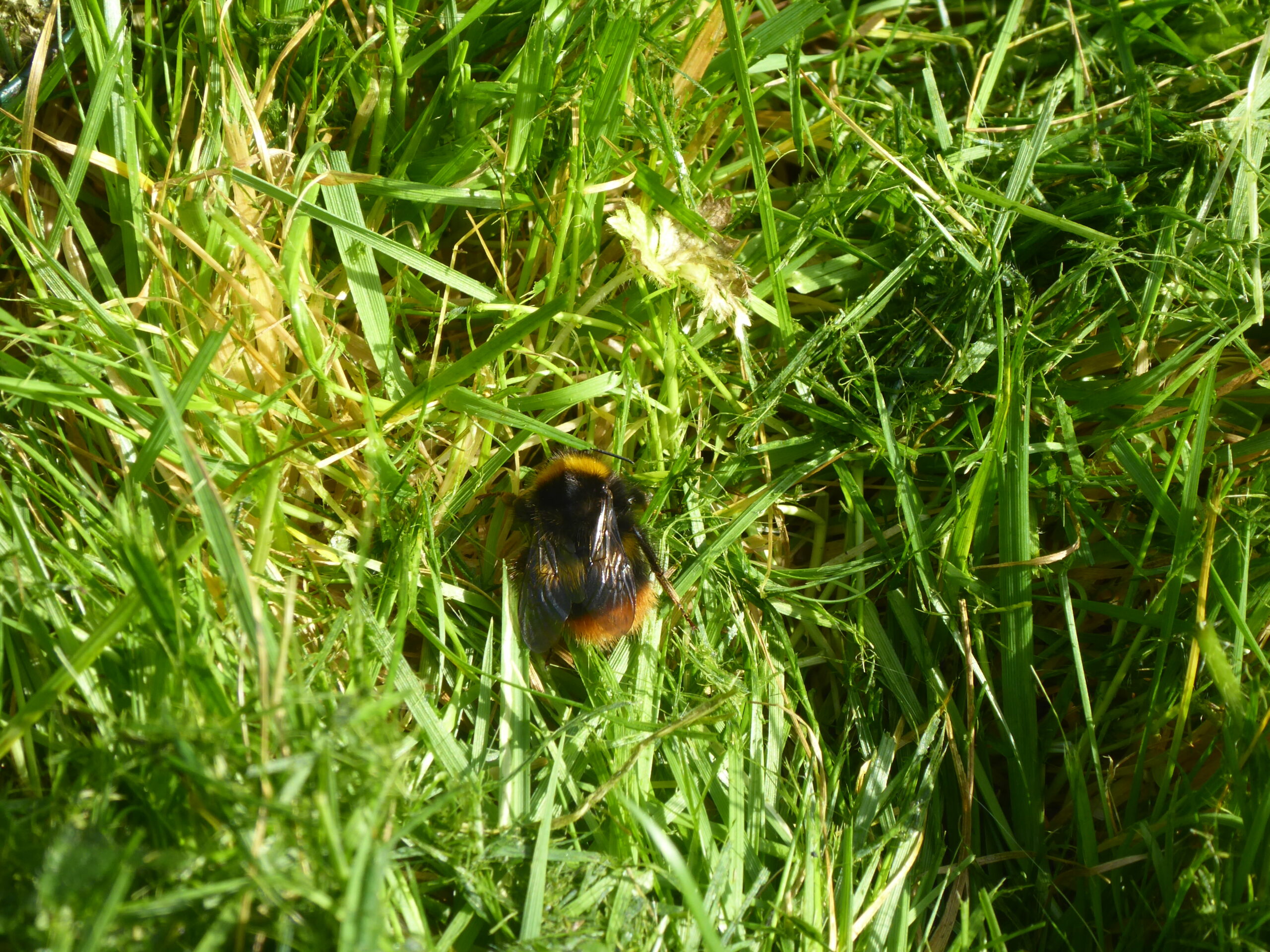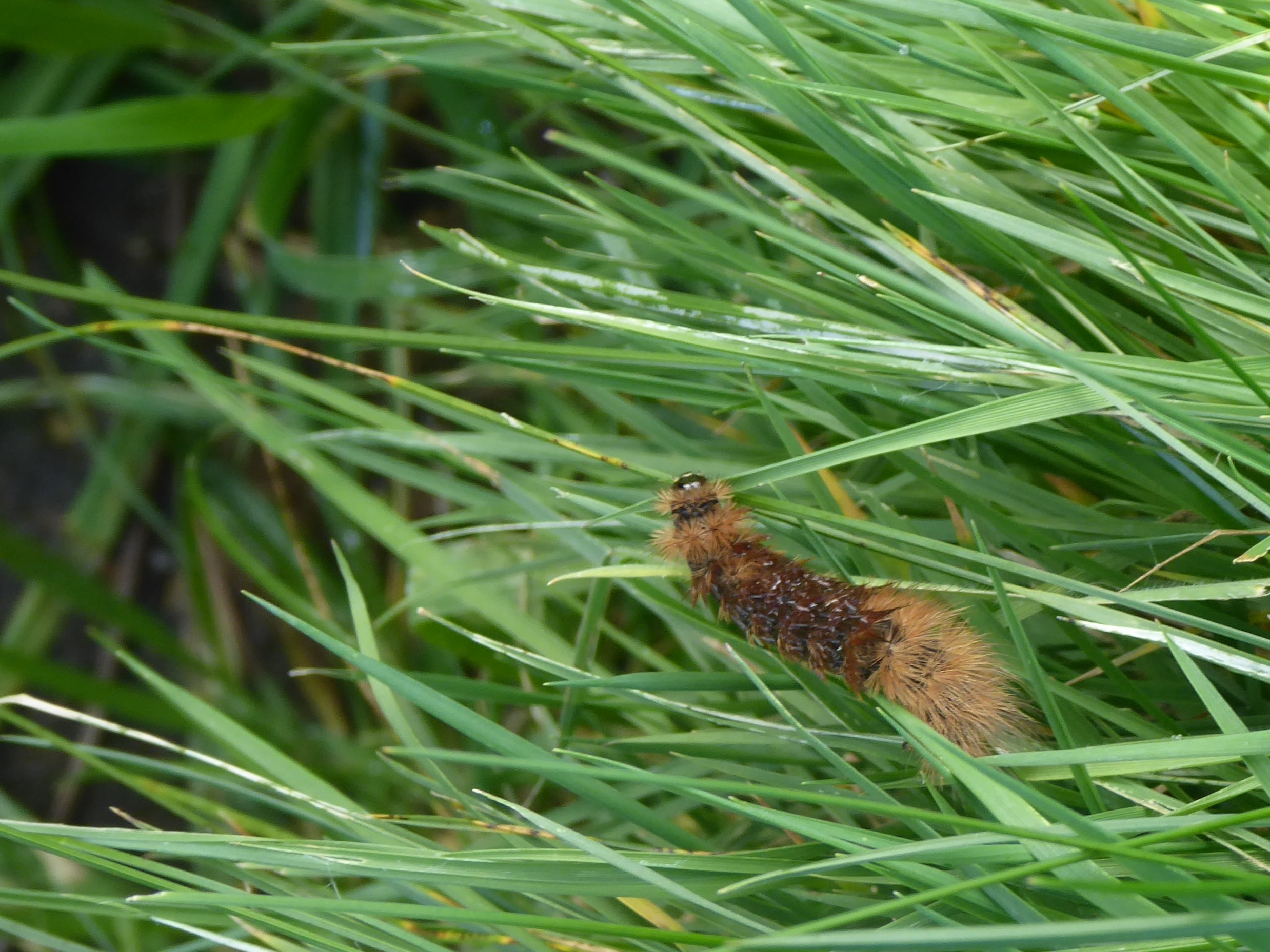With rosettes of long ginger hairs, and a black face with white markings to make it look fiercer, this was identified as a Ruby Tiger Moth Caterpillar. The caterpillars eat dock, dandelion and plantain, and also broom, ragwort and heather and can be found in a variety of habitats including moorland, heathland, open grassland, sand-dunes, gardens and watermeadows.
The moths can be seen April to June and August to September. They have a flame red body with black spots and ginger wings.
I was concerned that this caterpillar looked in a bad way with a large wet patch. I thought it might be a wound. We spotted it near to the Nursery Web Spider, but I couldn’t find any references to the spider preying on a caterpillar twice its size. Then I found out that caterpillars can start to liquify before they pupate, as the cocoons are smaller than the caterpillar and they have to squash in somehow. The lack of stripes and plumpness of this caterpillar indicates that it may be a 5th instar, which means that it is due to pupate next. It will spin a cocoon of silk and incorporate some of its hair as well.
